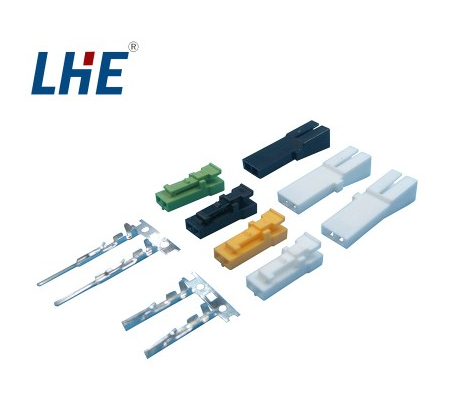- Price: The value increase of automotive connectors under the trend of electrification and intelligence
1.1 Automotive connectors have become the largest segment
According to Bishop & Associates, the global connector market sales in 2020 will be 62.73 billion yuan, with a CAGR of 2.7% from 2010 to 2020, and is expected to exceed 90 billion US dollars in 2023. In 2019, the automotive field surpassed communications to become the largest market segment, accounting for 23.7%. From a field perspective, the increased volume of new energy vehicles provides continued momentum for the growth of automotive connectors. According to Bishop & Associates, the global automotive connector market size will reach US$19.45 billion in 2025 (US$14.15 billion in 2020).
1.2 The craze of electrification and intelligence leads the automotive connectors
The trend of vehicle electrification and intelligence has led to changes in the vehicle's power system, electronic and electrical architecture, intelligent driving system, and entertainment and audio-visual systems. The usage and requirements of vehicle-mounted connectors have increased simultaneously.
At present, connectors suitable for new energy vehicles are divided into two categories: 1) High-voltage connectors, which are mainly used in high-voltage current circuits in vehicles, related to power motors, distribution boxes, inverters and electric drive units, and also include charging/swapping Electrical system; 2) High-speed connectors, including radio frequency connectors and Ethernet connectors, are mainly used for data transmission of sensors and cameras in assisted driving systems and entertainment terminals. Traditional low-voltage wire harness connectors are responsible for brake systems, door wire harnesses, transmission and steering systems and other body control areas.
Traditional automotive connectors are mainly low-voltage, and the value of a single vehicle is about 1,000 yuan. The electrification and intelligence of new energy vehicles have brought demand for high-voltage connectors and radio frequency connectors, and the value of a single vehicle will increase to 3,000~5,000 yuan.
1.3 High-voltage connectors: the connector solution that emerged
New energy vehicles use large-capacity lithium batteries, and their operating voltage range has jumped from 14V in traditional vehicles to 400~600V. The number of electric drive units and electrical equipment has increased significantly, which poses new challenges to the reliability, volume and electrical performance of connectors. High demands.
High-voltage connectors are mainly used in high-voltage current circuits of new energy vehicles (including charging systems and vehicle systems). They work with conductive cables at the same time to transport energy through different electrical circuits to various high-voltage components in the vehicle system, such as Body units such as battery packs, motors/motor controllers, PDUs, charging systems, DCDC converters, air conditioning compressors, and PTC heaters. The value of a single high-voltage connector for new energy vehicles reaches 1,000 to 3,000 yuan.
1.4 High-voltage connectors: Charging piles are in short supply
According to data disclosed on the Bishop website, the average price of a single new energy vehicle charging pile is 20,000 yuan, of which the cost of the connector is about 3,500 yuan, and the charging pile connector accounts for a large proportion of the value. According to Charging Alliance data, as of September 2011, member units within the alliance had reported a total of 1.044 million public charging piles. If the number of private charging piles is included, as of September this year, the cumulative number of charging infrastructure (public + private) nationwide was 2.223 million units, a year-on-year increase of 56.8%.
As of September 2021, the number of new energy vehicles in China is 6.78 million, and the current vehicle-to-pile ratio is 3.05:1. As the number of new energy vehicles increases at an accelerating rate, there is a huge market space to achieve a 1:1 vehicle-to-pile ratio with a reasonable charging configuration.
1.5 High-voltage connectors: new demands created by the power swap model
Due to the current technological level, the continuous driving range of pure electric vehicles is limited, and the battery swap mode makes up for this shortcoming. At present, the battery capacity of mainstream pure electric models is mostly 70kWh, and the cruising range on a single charge is about 500 kilometers. However, the charging time is long, and DC fast charging is also more than 30 minutes (charging to 80%). The NIO battery replacement station only takes 5 minutes to replace the battery.
In the application of the battery swap mode of new energy vehicles, the battery swap connector is the only electrical interface of the battery pack and needs to provide mixed connections of high voltage, low voltage, communication and grounding at the same time; during the rapid battery swap process, the battery must cooperate with the entire vehicle There are errors, and the power-replacement connector needs to have floating compensation capabilities; in addition, because the frequency of battery replacement is high, the power-replacement connector also needs to meet the requirements of long life and low maintenance costs. The value of a single set of power-swapping connectors is relatively high, around a thousand yuan. Taking Weilai as an example, one set of connectors is needed in the car and 10 sets+ at the power-swapping station to realize the function. Power swapping has received strong policy support, and car companies and power swapping operators have launched plans to build power swapping stations. In 2025, the number of domestic power swapping stations is expected to exceed 15,000 (as of September 2021, there are 890 nationwide).
